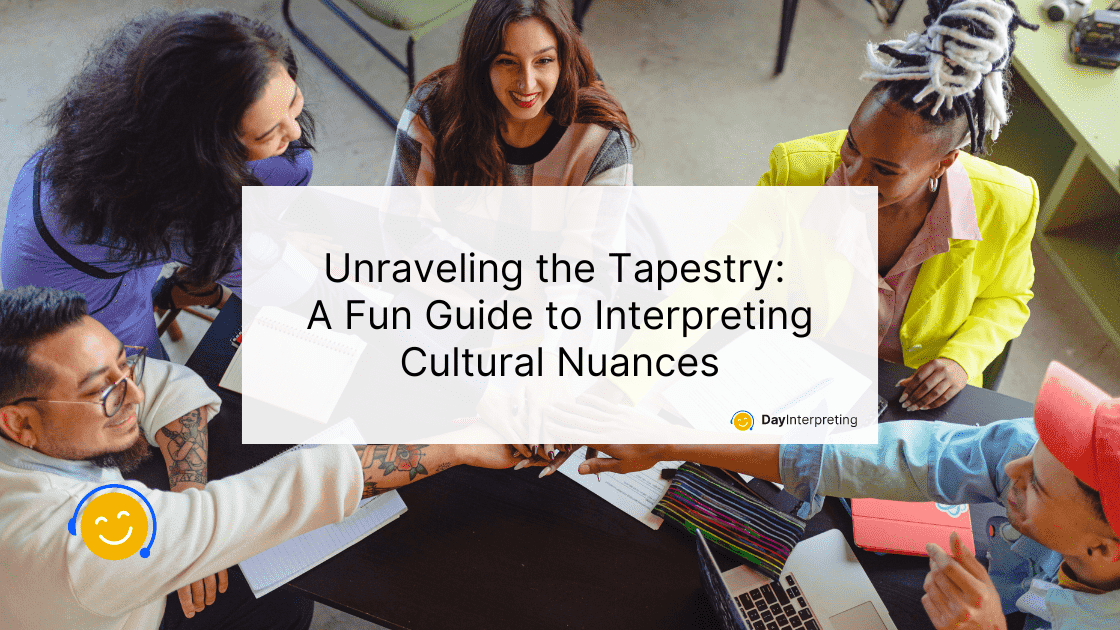Welcome to the fascinating world of interpreting cultural nuances! Imagine cultures as unique puzzles, each piece contributing to the beautiful tapestry of our global community. In this adventure, we’ll embark on a journey to understand the intricate details that make each culture special. So, buckle up for a joyous ride as we delve into the delightful realm of cultural understanding!
What Are Cultural Nuances?
Before we dive deep, let’s grasp the concept. Cultural nuances are the subtle differences in behavior, communication, and customs that distinguish one community from another. These nuances are the secret codes that, when deciphered, open doors to meaningful connections and avoid unintentional cultural faux pas.
Language, the Melody of Culture
Language is the key to unlocking a culture’s heart. Did you know that some cultures use specific words or phrases to express emotions that might not have a direct translation in other languages? For example, the Japanese term “Komorebi” beautifully captures the interplay of sunlight through leaves. Learning these unique expressions unveils the richness of a culture’s emotions.
Gestures Speak Louder Than Words
Ever wondered why a thumbs-up means different things in different places? In some cultures, it’s a positive sign, while in others, it might be perceived as rude. Understanding gestures is like having a secret handshake – it opens the door to shared understanding. Imagine being in a foreign land where you don’t speak the language, but miraculously, people communicate with you effortlessly. How? Through gestures! Gestures are the silent yet powerful language that transcends words. They are like a global secret code, connecting people even when verbal communication is challenging.
Time – A Cultural Tapestry
Did you know that punctuality means different things across cultures? In some places, being fashionably late is the norm, while in others, it’s a sign of disrespect. Time perception varies globally, and understanding these differences ensures smooth cultural navigation.
The Interpreter’s Dance with Cultural Nuances
Interpreters, like linguistic maestros, stand at the intersection of languages and cultures. Their role is not just about converting words from one language to another but also about translating the subtle dance of cultural nuances. Think of them as the navigators guiding us through the intricate channels of cross-cultural communication.
When interpreting, these language experts engage in a delicate balance of linguistic acrobatics. They convey the literal meaning of words and consider the cultural context, ensuring that the message resonates authentically with its intended audience. It’s a performance where every gesture, tone, and cultural reference is carefully translated.
Imagine a scenario where a business deal is being negotiated between a Western company and an Eastern partner. The interpreter is not merely a conduit for words; they are bridge builders. They must grasp the cultural intricacies surrounding negotiations, understand the unspoken cues, and convey the essence of the conversation in a way that aligns with both parties’ cultural expectations.
Interpreters also serve as cultural ambassadors, embodying the essence of respect and sensitivity. They are attuned to the cultural norms of both the speaker and the audience, ensuring that the communication is accurate and culturally appropriate. This requires a deep understanding of the social fabric, customs, and etiquette of the cultures involved.
Interpreters as Cultural Guides
In the grand orchestra of cross-cultural communication, interpreters are the conductors, harmonizing the diverse language and culture notes. Their skillful interpretation of verbal and non-verbal cues transforms communication into a seamless dance where cultural nuances are celebrated and respected. So, the next time you witness a successful cross-cultural exchange, remember the unsung heroes – the interpreters – who weave the threads of understanding through the intricate tapestry of global communication!





0 Comments